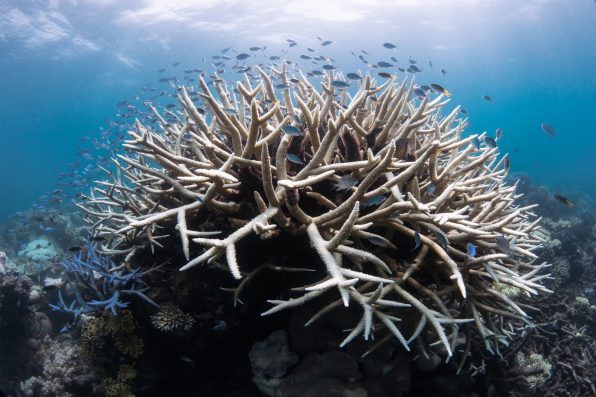The World Is Experiencing Its Fourth Global Coral Bleaching Event In History, With Ocean Temperatures Reaching Record-Breaking Highs And Causing Reefs To Lose Their Color

The National Oceanic and Atmospheric Administration’s (NOAA) Coral Reef Watch has announced that the world is currently experiencing its fourth global coral bleaching event in history.
The event is the second one to occur in the last 10 years and puts coral reefs and the populations that depend on them in danger.
Ocean heat is reaching record-breaking highs, causing reefs to lose their color. In 2024, not a single day has the sea surface temperature been cooler than it was in 2023.
Across 53 countries and territories in the Atlantic, Pacific, and Indian Ocean basins, as well as in both hemispheres, significant coral bleaching has been documented.
Heat stress makes corals expel the algae, which gives them their color and helps them survive. As a result, they turn white, a process known as bleaching. This makes corals more susceptible to starvation, disease, and death.
Bleaching can be reversed if the environmental conditions return to normal, but experts are concerned that the situation is growing worse with each day that passes.
According to Derek Manzello, the coordinator of NOAA’s Coral Reef Watch, more than 54 percent of coral reefs throughout the tropics have experienced heat-induced bleaching since February 2023, and that number is increasing by about one percent each week.
So far, the affected areas include Florida in the U.S., the Caribbean, Brazil, the eastern Tropical Pacific, large parts of the South Pacific, the Great Barrier Reef in Australia, the Red Sea, the Persian Gulf, and the Gulf of Aden.
The Great Barrier Reef is enduring its fifth mass bleaching event since 2016. It’s also the first time that all three areas of the Great Barrier Reef Marine Park are experiencing high levels of bleaching at the same time.

The Ocean Agency – stock.adobe.com – illustrative purposes only
The past three major coral bleaching events took place in 1998, 2010, and between 2014 and 2017. During these events, approximately 20 percent, 35 percent, and 56 percent of reefs in the world were affected by bleaching.
The decline of reefs impacts not just the environment but economies and livelihoods as well. Coral reefs support fishing and tourism while protecting coasts from storms. Their disappearance would hurt the people who rely on reefs to make a living.
Scientists predict that the Earth will experience a 99 percent decline in coral reefs if global air temperatures reach 3.6 degrees Fahrenheit. They are expected to reach that point by 2050, possibly even sooner.
The NOAA is working to manage and restore the reefs. The agency learned a lot about mitigating harm to corals during the 2023 heat wave in Florida. The heat wave was the hottest and longest-lasting one to have ever occurred in the region. Hopefully, some of the reefs can recover before it’s too late.
Sign up for Chip Chick’s newsletter and get stories like this delivered to your inbox.
More About:News





